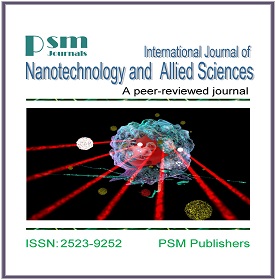Antioxidant Capacity of In-vitro generated Solanum tuberosum L. Cultivar (Favorita)
Keywords:
Antioxidants capacity; Solanum tuberosum L. (Favorita); ABTS; DPPH; Total phenolic content; HPLC.Abstract
Plant-based diets are rich in antioxidants that scavenge harmful free radicals in order to reduce the risk of the development of oxidative stress-related diseases. Solanum tuberosum L. is endowed with a high content of antioxidants including phenolic acids and flavonoids, however, concentrations of these secondary metabolites in cultivars such as Favorita remain largely undefined. Thus, the total phenolic contents of Favorita were analyzed using HPLC, while percentage inhibition of DPPH and ABTS assays were performed to determine antioxidant activities. The major constituents of phenolic acid in the potato root methanol extract were vanillic acid and chlorogenic acid. Similarly, antioxidant activity ranged from 5.7% (% inhibition of DPPH) to 69.85% (% inhibition of ABTS) in comparison to the three available standards. Total phenolic content and antioxidant capacity revealed a significantly high linear correlation (R2 = 0.951, P = 0.01), suggesting a direct involvement of phenolics in the antiradical activity. These results demonstrate that Favorita contains potent antioxidant capacity; however, this potency is dependent on the specific free radicals utilized. These findings would facilitate future research on potato micropropagation for improved agronomic traits as well as give information on its nutritional use as an antioxidant.







